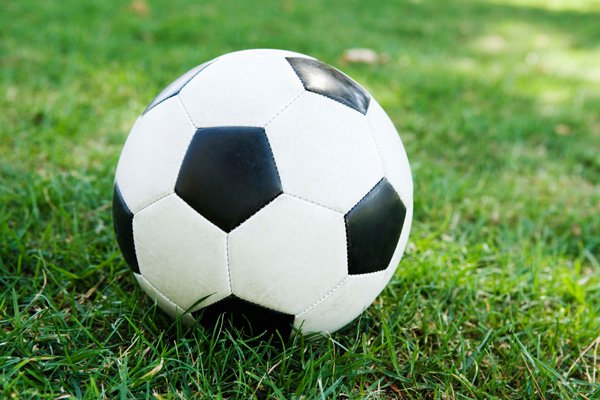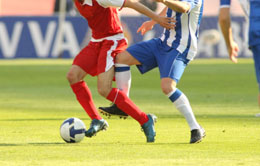
Propellers on fishing lures have always fascinated me since childhood. Somehow in my mind I think that it represents an airplane that has crashed into the water. You keep pulling the lure through the water in hopes of getting it airborne. All that happens is that the props turn throwing water skyward and then a fish ruins your attempts to fly the gizmo by engulfing the lure. Would you like to build one of these lures? Maybe you can get yours to fly? I will show you how to construct one step by step. This bait is actually a facsimile to the famous Smithwick Devil's Horse. The lure is a topwater model that incorporates a propeller on both ends.
As is the case with most of my homemade projects the cost to build these is low. Only hand tools will be used in the fabricating process of this bait. Another added plus for doing this project is that you do not have to paint the lure or add eyes which gives you more time to use it.

Parts Needed For Construction Of This Lure:
1. One Mini Dry Erase marker tube. This is one of those items that you can get free if you have access to the trash of teachers or secretaries.
2. Four small red beads will be needed in the building of this bait. The beads are used as spacers and are the smooth round surface that allows the propeller blades to spin smoothly.
3. One split ring to attach a hook onto the wire loop at the rear portion of the bait.
4. Two paper clips for the construction of the through wire assembly.
5. One treble hook that is a size 4 or 6.
Tools Needed For The Assembly Process:
1. Split ring pliers should be used to attach the split ring and hook with the wire assembly.
2. Needle nosed pliers that are needed to help form the loop on each end of the wire shaft assembly. Also these will be needed for disassembling the ink marker.
3. One small sheet metal screw. The screw is used for boring two holes in the marker bodies. The holes are for the wire assembly to fit through.
4. Slip joint pliers will come in handy for disassembling the dry erase marker.
Let The Construction Begin:
The first task that you will perform is that of removing the tip and the ink blotter from the marker housing. First remove the cap from the marker. Now use your pliers (described as number 2 on the tools needed list) to pull the point from the body of the marker. A bit of force is needed to accomplish the second task. Place the tip of the needle nosed pliers into the hole that was created when the tip was removed from your marker. Hold on to the middle of the marker's case firmly with a pair of slip joint pliers. Pull hard with the other pliers (needle nosed) to pull the colored part of the marker away from the white part. The ink blotter should now be removed from the inside of the case and disposed. Leave the marker apart for the next few steps.
Building The Wire Assembly
The wire assembly can now be put together for this lure. Use the needle nose pliers to straighten both paper clips. Form a loop at one end of the first paper clip. Place one end of the other paper clip through the loop that you just formed in the first paper clip.



Finishing The Lure
The finishing process of this lure can now begin. You drill a hole on each end of the case. This will accommodate installing the wire assembly. Now you will place the wire assembly into you're hi lighter case as shown in the picture above. Place both halves of the case together now. Add a small amount of the silicone adhesive to the section where both halves meet. Doing this step will help to ensure the watertight integrity of the lure. Also add some adhesive to where the wires come through the case (both ends).
The placement of the beads and propeller is the next undertaking to complete. See the picture for the correct placement of each item. Note: The picture shows the rear prop placement. This will also be done for the front of the lure as well. Loops will then be made on each wire end of the wire. Make each loop as close to the last bead as possible. If you do not know how to form a loop on the wire a quick check of my article titled "How to Make Inline Spinners That Catch Fish" should be read.
After the loops are made in the wire a split ring is added to the rear loop. This split ring will have a hook attached to it. You will use a pair of split ring pliers to accomplish this task. You can also add a split ring to the front loop. This is optional. On my personal lures I try to keep any added weight to a minimum. For that reason I do not add the front split ring. Some people think that the front split ring gives the lure more action. Try it both ways and see which one works best for you.
Tips About Fishing The Prop Bait
The way that I approach fishing a prop bait is very similar to a technique used for fishing poppers. Tie the lure to your line using a loop knot. I then cast the lure slightly beyond where you think the fish is located. Allow the ripples that were made from the lure hitting the water to subside. Now give the fishing rod two quick jerks. This will move the bait about 6 inches and allow the props to splash water into the air. While this is happening a fluttering noise is also being made by the propellers turning. Pause the lure for about 15 seconds. Repeat the process until the lure is the whole way back to the rod tip. If you are fortunate, your fishing lure will not make it that far. Hopefully a fish will show interest in your efforts and grab the prop bait.
At times twitch the lure 3 times. Other times twitch it once. Vary your speeds and cadences until the fish tell you what they want by taking the lure. It has always been a guessing game until you let the fish tell you what they want.
Enjoy fishing with your new prop bait. These baits are really easy to make and they do work the same way that the ones bought from the store function. Have fun and be safe while you fish.
Portable Basketball Hoops: The Good and The Bad

Childhood Soccer Training Can Support a Pro Soccer Career


Copyright © www.mycheapnfljerseys.com Outdoor sports All Rights Reserved